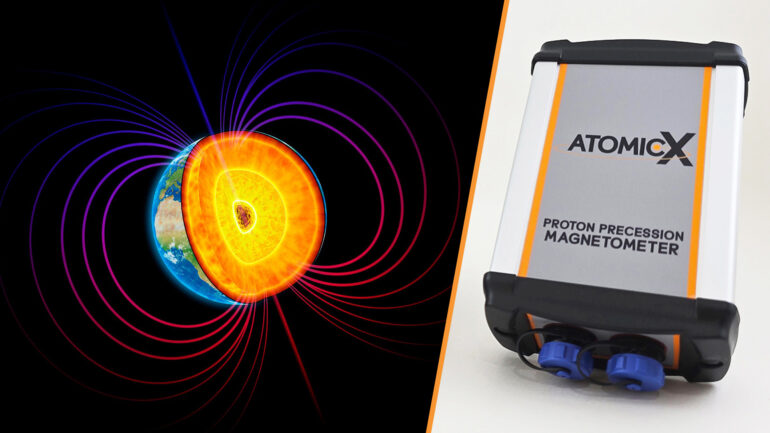How Proton Magnetometers Work: The Science Behind Magnetic Field Detection

Proton magnetometers are powerful tools used to measure the Earth’s magnetic field, offering unparalleled accuracy and reliability. These devices are widely used in fields like archaeology, geology, environmental studies, and even treasure hunting. But what makes proton magnetometers so effective? Let’s dive into how they work.
How Proton Magnetometers Work
At the heart of a proton magnetometer is a liquid—usually a hydrocarbon fluid—that contains hydrogen atoms. The magnetometer leverages the magnetic properties of these hydrogen nuclei, or protons, to detect variations in magnetic fields. Here’s how the process works:
1. Polarizing the Protons: The magnetometer generates a strong magnetic field around the fluid by sending a high current to the coil that surrounds the fluid inside the sensor, aligning the protons in one direction. This initial alignment process is called polarization.
2. Turning Off the Field: Once polarized, the magnetic field is switched off, by imidiatly cutting the power, allowing the protons to return to their natural orientation within the Earth’s magnetic field.
3. Precession and Measurement: As the protons return to their original state, they begin to “precess” or rotate around the Earth’s magnetic field direction. This precession occurs at a specific frequency, directly proportional to the magnetic field’s strength.
4. Frequency Detection: The device then detects this frequency, allowing it to calculate the exact strength of the magnetic field. This frequency measurement is converted into a readable magnetic field value in nanoteslas (nT), providing highly accurate data.
Why Proton Magnetometers Are Effective
The unique process of proton precession enables these magnetometers to achieve high sensitivity and stability, making them especially useful for detecting subtle changes in the Earth’s magnetic field. This sensitivity allows proton magnetometers to pick up slight variations caused by buried structures, geological formations, or metallic objects.
Their robust and straightforward design also makes proton magnetometers reliable in diverse environments—from rugged terrain to underwater sites. Unlike other types of magnetometers, they require minimal recalibration, simplifying fieldwork and enhancing productivity.
Buy AtomicX Proton Magnetometer
For pricing and more details, request your quote for the AtomicX Proton Magnetometer:
